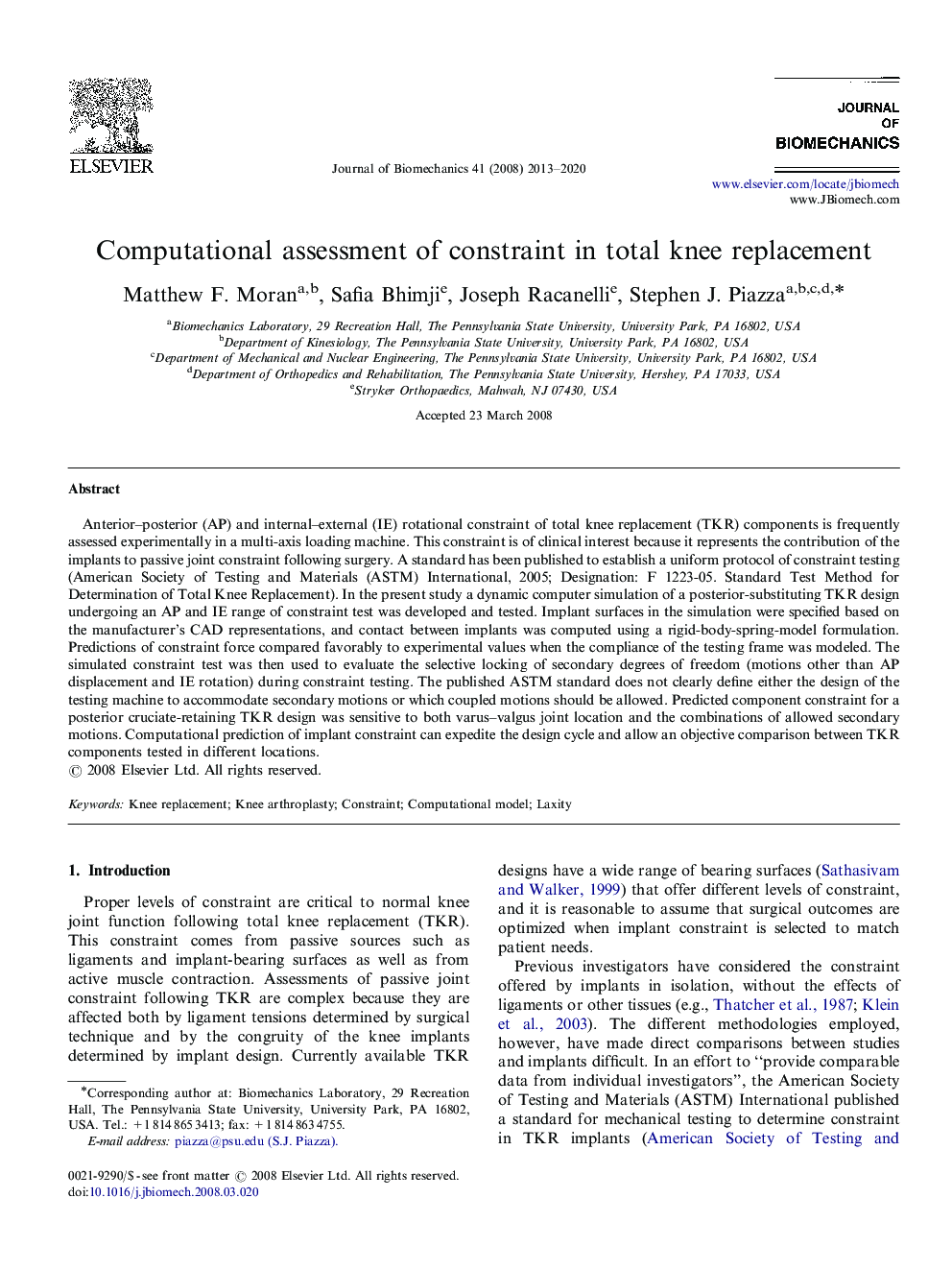| Article ID | Journal | Published Year | Pages | File Type |
|---|---|---|---|---|
| 875175 | Journal of Biomechanics | 2013 | 8 Pages |
Anterior–posterior (AP) and internal–external (IE) rotational constraint of total knee replacement (TKR) components is frequently assessed experimentally in a multi-axis loading machine. This constraint is of clinical interest because it represents the contribution of the implants to passive joint constraint following surgery. A standard has been published to establish a uniform protocol of constraint testing (American Society of Testing and Materials (ASTM) International, 2005; Designation: F 1223-05. Standard Test Method for Determination of Total Knee Replacement). In the present study a dynamic computer simulation of a posterior-substituting TKR design undergoing an AP and IE range of constraint test was developed and tested. Implant surfaces in the simulation were specified based on the manufacturer's CAD representations, and contact between implants was computed using a rigid-body-spring-model formulation. Predictions of constraint force compared favorably to experimental values when the compliance of the testing frame was modeled. The simulated constraint test was then used to evaluate the selective locking of secondary degrees of freedom (motions other than AP displacement and IE rotation) during constraint testing. The published ASTM standard does not clearly define either the design of the testing machine to accommodate secondary motions or which coupled motions should be allowed. Predicted component constraint for a posterior cruciate-retaining TKR design was sensitive to both varus–valgus joint location and the combinations of allowed secondary motions. Computational prediction of implant constraint can expedite the design cycle and allow an objective comparison between TKR components tested in different locations.
